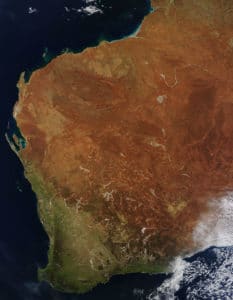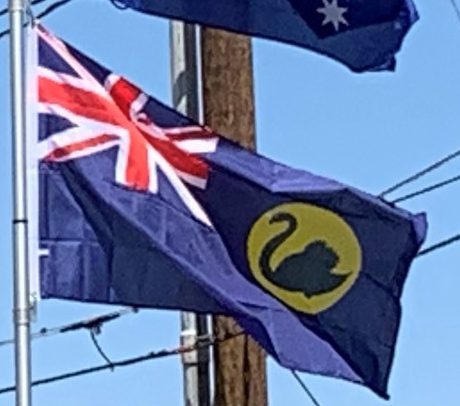Because the only mountain-building since then has been of the Stirling Range with the rifting from Antarctica, the land is extremely eroded and ancient, with no part of the state above 4,085 feet at Mount Meharry in the Hamersley Range of the Pilbara region. Most of the state is a low plateau with an average elevation of about 1,200 feet, very low relief, and no surface runoff. This descends relatively sharply to the coastal plains, in some cases forming a sharp escarpment.
The extreme age of the landscape has meant that the soils are remarkably infertile and frequently laterised. Even soils derived from granitic bedrock contain an order of magnitude less available phosphorus and only half as much nitrogen as soils in comparable climates in other continents. Soils derived from extensive sand-plains or ironstone are even less fertile, nearly devoid of soluble phosphate and deficient in zinc, copper, molybdenum and sometimes potassium and calcium.

The infertility of most of the soils has required heavy application by farmers of fertilizers. These have resulted in damage to invertebrate and bacterial populations. The grazing and use of hoofed mammals and, later, heavy machinery through the years have resulted in compaction of soils and great damage to the fragile soils.
Large-scale land clearing for agriculture has damaged habitats for native flora and fauna. As a result, the South West region of the state has a higher concentration of rare, threatened or endangered flora and fauna than many areas of Australia, making it one of the world’s biodiversity “hot spots”. Large areas of the state’s wheat-belt region have problems with dry-land salinity and the loss of fresh water.
Economy:
Western Australia’s economy is largely driven by extraction and processing of a diverse range of mineral and petroleum commodities. The structure of the economy is closely linked to these natural resources, providing a comparative advantage in resource extraction and processing. As a consequence, Western Australia contributes an estimated 58% of Australia’s Mineral and Energy Exports, potentially earning up to 4.64% of Australia’s total GDP.
Finance, insurance and property services and construction have grown steadily and have increased their share of economic output.
Recent growth in global demand for minerals and petroleum, especially in China (iron-ore) and Japan (for LNG), has ensured economic growth above the national average.
Western Australia’s overseas exports accounted for 46% of the nation’s total. The state’s major export commodities include iron-ore, alumina, nickel, gold, ammonia, wheat, wool, crude oil and liquefied natural gas (LNG).
Western Australia is a major extractor of bauxite, which is also processed into alumina at four refineries providing more than 20% of total world production. It is the world’s third-largest iron-ore producer (15% of the world’s total) and extracts 75% of Australia’s 240 tonnes of gold. Diamonds are extracted at Argyle diamond mine in far north of the Kimberley region. Coal mined at Collie is the main fuel for baseload electricity generation in the state’s south-west.
Agricultural production in WA is a major contributor to the state and national economy. Although tending to be highly seasonal, 2006–07 wheat production in WA was nearly 10 million tonnes, accounting for almost half the nation’s total. and providing $1.7 billion in export income.
